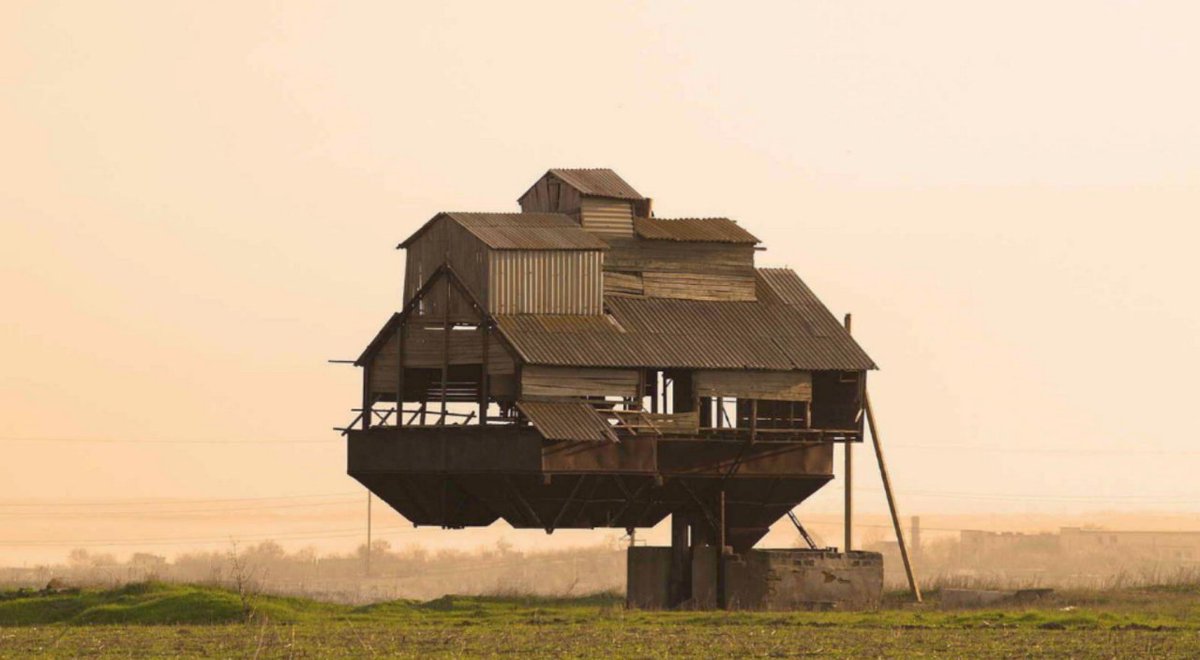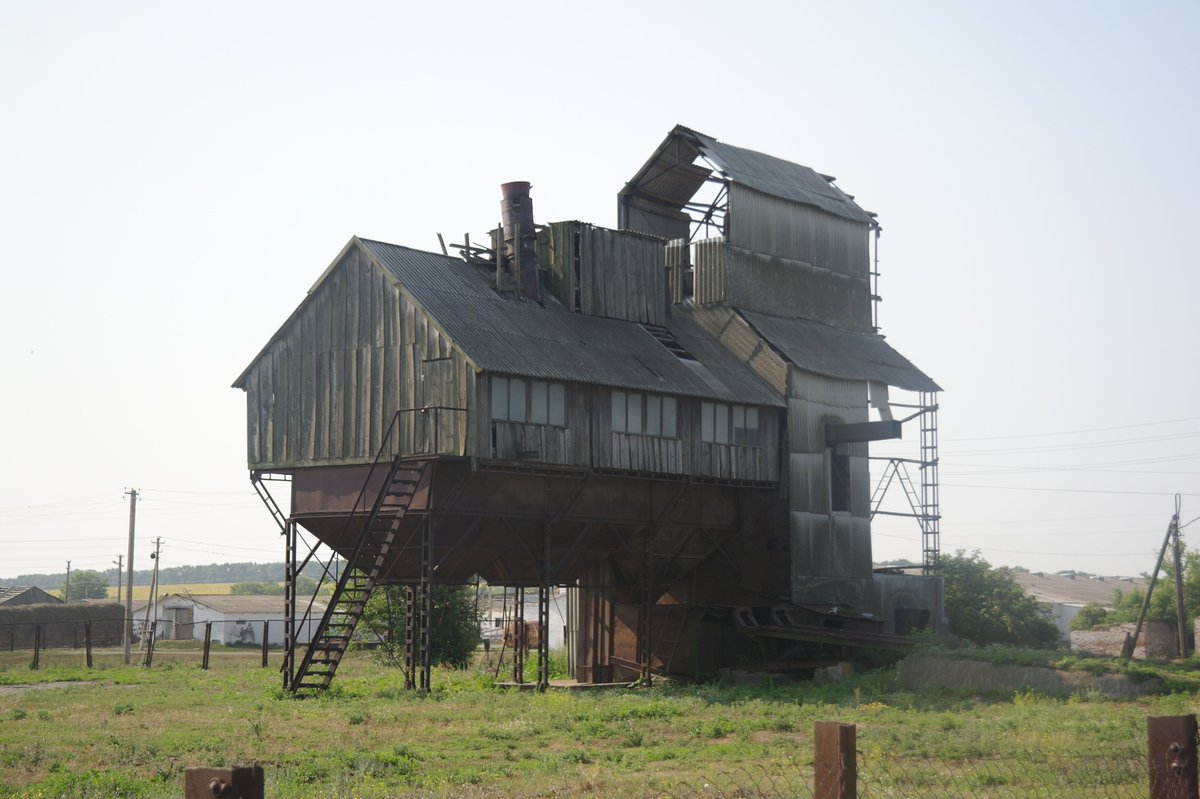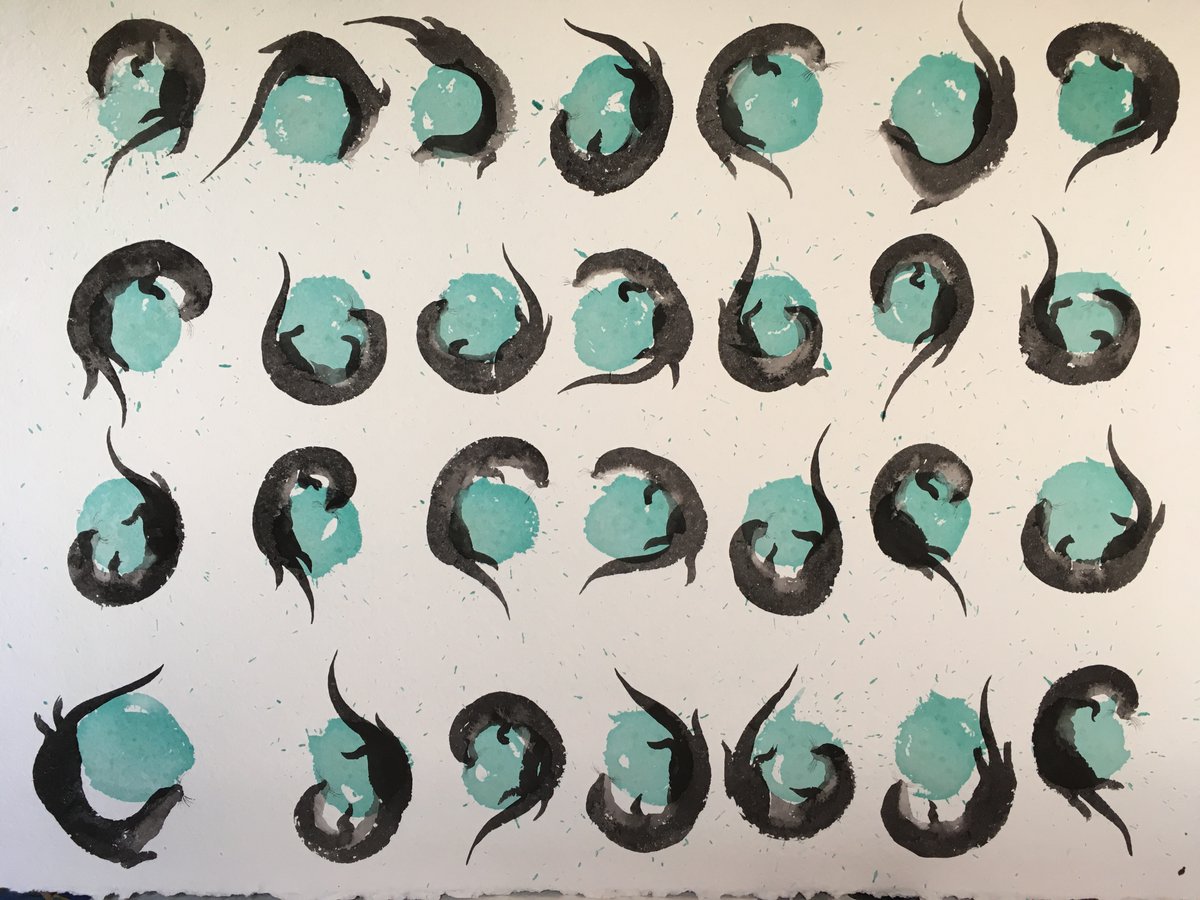Floating Odessa, 28 otters, and design fiction
The short tale of the floating potato sorter. This ethereal, Studio Ghibli-esque photo of what purports to be an abandoned Ukrainian potato sorter crossed my timeline recently via Cory Doctorow’s prolific curation from Tumblr.


Fascinating, right? About seven clicks in to tumblr reshares, I learned a few more things but haven’t been able to verify much of the story. First, it’s been going around since at least 2011 and is usually called the “floating castle” or “floating house” of Odessa/Ukraine. Second, some people theorize that the support legs were either removed from the photo by a photoshopper:
…or removed from the building by vandals. The blog post from 2011 suggests that it would usually look like this:
And third, I learned that it’s purported to be about 5 kilometers north of Odessa. So as not to bury the lede, I nearly hurt my eyes and my scrolling hand poking around satellite views of Odessa only to come up empty-handed. It’s definitely not this Floating House in Odessa which is marked by some really amazing slice of life photos of houseboat life.

That was the dead end of the potato sorter quest. But it did impress upon me what a cool place Odessa seems to be. I dug around on Flickr and found beautiful shots of a vibrant and historic port city with great light and a whole lot going on, and, of course, the one landmark of which I am familiar, the Odessa Steps. Most of the photos on Flickr have downloads disabled, but here are a bunch I enjoyed: (muscle and dive, storyteller, boardwalk, beachgoers, braids, and a weird hat).
So ends the tale. If you have any better luck tracking down that potato sorter, hit me up.
A meditation in 28 otters, by Jackie Morris:
The future is a partly broken space. This banana involves the concept of “design fiction,” which upon my first read seems extremely useful for anyone spending time making something new, and I think “something new” can be read pretty expansively. The full quote that the green bold title comes from:
“Just as the present, the future is a partly broken space. The future is a place in which the brand new cohabits and interferes with the old.
Learning how to see and organize these signals is part of the practice of Design Fiction.”
Design fiction is a practice of making artifacts from an imagined possible future, and then using them as a means of thinking about the thing you are intending to create, to challenge your implicit assumptions about how something will or won’t work given an ever-changing present. More from the loosely transcribed Fabien Girardin talk:
“Today, most decision makers look into the future gathering thousands of pages of diagrams, charts, analysis and projections into a “mega doc” with cross references.
That brings some more clarity, but it often fails to bring all the pieces of the puzzle into a whole that is understandable by many.
Design Fiction forces to actually MAKE things to pre-visualize what is really possible with all the drawbacks and nuances. And by “making things,” I mean creating an actual artifact that forces a team to think about the details of a future in a way that writing a story does not.
It does NOT mean to produce written scenarios or stories about a future state.”
This is very different practice than I’ve seen digital agencies, ad firms, UX firms, ethnographic researchers, architects, and product managers try to bite off, and something that involves a completely different part of the researcher’s brains. And also sounds like a hell of a lot of fun. It’s just as prone to being wildly off or focused on the wrong things as any other speculative practice, but it feels like it would spark valuable discussions, observations, tangents, and flights of fancy no matter what. It’d probably get you a lot closer to something you might properly call an “insight” as compared to the dressed up assumptions that usually get called insights in a planning or creative brief.
Read the full transcription on design fiction.
Bonus banana: There’s something about crabs. Apparently animals keep evolving into crab-like things.
These are the bananas I found for you this week. You can hit “reply” and it’ll go only to me. Thank you.




